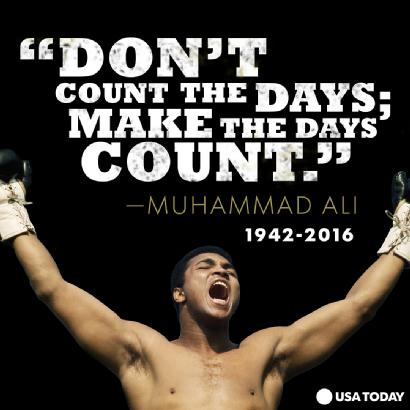
These goal-setting strategies will make you a winner. They’ll help you achieve what you want to achieve by year’s end.
Goal-Setting Is a Process
Set Goals You Can Control
Goals Must Align With Your Values
Get an Accountability Partner
Break Goals Into 90-day Targets
Celebrate
CASE STUDY: My 2017 goals
Truthfully, I’d prefer not to have to set goals each year. The process requires me to pay attention to details, which is not my natural style. However, I’ve learned certain goal-setting strategies will help me—and you– be more successful. And as one CEO told me recently, “The difference between having goals and not having goals is results.”
And I like results, so let’s get started. (I’ve included my goals in the case study at the end.)
First off, setting goals is a process. It’s a lot easier if you have goals from a previous year you can build on. If you don’t, start the process by asking yourself what is it you want to have accomplished by the end of the year. This is called starting with the end in mind.
Do you want to travel or learn a new language? Or do you want a new job?
Where do you start? If you have no idea what your goals should be, brainstorm with yourself or a friend. How do you want to be different by the end of the year? What do you dream about doing? Is this the year for that?
Talk to your boss about what your goals at work should be. Get input from co-workers. Look at your last performance review for ideas to work on.
Set a deadline by which you will have created your goals. Otherwise, you might be thinking about your goals much longer than you should. I suggest you set Jan. 31 as the deadline for having your goal-setting done and in writing.
When you are setting your goals, sit back and challenge yourself. Play devil’s advocate. Are your goals realistic and achievable? If they are not, change them. It is no fun to set goals that are so far out of range that you can’t possibly meet them. If you do that, you’ll spend the year beating yourself up for not making your goals. Or you’ll drop the goals entirely.

This is critical: When you set goals, make sure the goals you select are ones whose outcome you can control.
Meet my friend Nina. Her No. 1 goal is to get promoted to a manager position. Let’s see how that goal plays out for her.
Nina has absolutely no control over whether she gets promoted. However, she can control what she does to prepare herself to qualify for promotion.
Does Nina know the following?
What knowledge, skills, and abilities are required for the position she wants? Her best resource for learning what’s required is to get the job description for the role she’s aiming for. Her boss or HR should be able to get that for her. She can also search online job databases to see what’s usually required for that position.
Is she qualified for that position? Once she gets the job description, Nina needs to determine whether she meets the qualifications for the job. Does Nina need to learn new skills to get that job? In reading the job description, Nina sees that the position calls for
Nina knows she is scared silly of public speaking, which makes large team meetings and presentations to management a serious challenge for her. She even begins to wonder if she really wants this promotion.
Nina also knows that she doesn’t know how to bring in new business. She’s been to a couple of networking events and hated them. If bringing in new business requires networking, does she even want the job?
After serious reflection and talking with family and friends, Nina decides she’s going to go for the promotion after all.

Where can Nina learn the skills for the position? Continuous learning opportunities are everywhere these days. Some options are
Nina needs to check with her boss or HR to see if the company will pay for the training she needs. If they won’t, she needs to keep her receipts for the courses, since they may be tax deductible. She needs to check with her tax preparer on that.
Finally, she needs to create a development plan that reflects what she is doing to prepare for the role she wants. She should share this plan with her boss. That shows she’s taking initiative and in charge of her own career growth. Companies today want to see that in their people.
Nina’s goals
Based on her research, Nina’s goals for equipping herself for promotion are:
Your goals must align with your values. These are your goals, and they should reflect what is important to you in your life. If you have not figured out what your core values are, check out this link to our core values worksheet. Core values are those that you will not violate no matter what. Articulating your core values helps you make decisions.
For example, let’s look at my goal for building MentorLoft’s brand through social media. My goal is to educate and help others grow. Enlightenment for myself and others is one of my core values. I have to ask myself whether the steps I am taking to build the brand reflect my core values. If they do not, then I shouldn’t take them. If I violate my core values, I won’t be happy with the results, even if I make money. Money is not one of my core values.
One of your goal-setting strategies needs to be to find someone who will hold you accountable for doing what you say you will do and when and how you say you will do it.
Years ago my friend Shawn Mahoney decided he wanted to lose 100 pounds because he was very overweight. He shared that goal with his Facebook friends, and they served as his accountability partners. He lost 100 pounds in one year and has kept it off for more than five years. He has worked very hard, and he also credits his Facebook friends who held him accountable.
Who will be your accountability partner? I don’t recommend that you rely on your partner or spouse because they don’t always tell you the truth. Find a buddy at work and support each other. Or enlist the help of a friend who can be honest with you.
Your accountability partner will look at your progress with a different view than you would. That partner can also suggest adjustments you may need to make. Or he or she may come up with an approach that you haven’t thought of.
Once you have your goals, which align with your values, and your accountability partner, it’s time to break the goals down into chunks. Some people are overwhelmed when they look at their goals for a year. Chunking them into segments by quarters makes the goals less intimidating.
For example, say your goal is to lose 50 pounds this year.
Divide 50 by 4 quarters = 12.5 pounds per quarter
Divide 12.5 pounds per quarter by 3 months = 4.16 pounds per month
Divide 4.16 pounds per month by 4 weeks = 1+ pound per week
That is certainly less intimidating than 50 pounds.
One of Nina’s goals is to join Toastmasters so she can improve her confidence when speaking in front of a group. At her first meeting, Nina learns that Toastmasters provides many ways to become more confident speaking in front of a group. She breaks her goal down this way:
1st quarter—Answer Table Topics questions twice a month, give first speech by end of Q1
2nd quarter—Take on more speaking roles in meetings, give second speech by end of Q2
3rd quarter—Serve as Table Topics Master, give third speech by mid Q3
4th quarter—Serve as Toastmaster, give 4th and 5th speeches by end of Q4

The point of setting goals is to achieve them. It’s important to break your big goals down into smaller chunks so that you can celebrate wins throughout the year, not just when the big goal is met.
Weight Watchers uses this approach to help members celebrate small wins on the way to the big win. That celebration comes with every 5 pounds you lose on your way to your weight loss goal, whether it’s 15 pounds or 50.
Plan what rewards you will get when you celebrate the smaller wins. It really helps to have something tangible that you can experience to help you realize that you have met a small goal.
When I finished my Master’s degree after three years the family took a cruise to the Western Caribbean. That was the reward I picked as we could all enjoy it but I didn’t have to do any of the planning.
I have five goals for 2017.
The first two goals were easy for me to come up with and are easy for me to execute. Creating a content calendar required me to do some research and push myself to get organized. My path towards achieving that goal is in an XL spreadsheet.
Building MentorLoft’s following on social media needs to be quantified. I also have to do more research to decide where and how and when I will pursue that goal. For example, how many fans do I want to get for the website?
Which social media do I want to focus on? Where are potential fans most likely hanging out? How much time do I want to spend and can afford to spend building the brand through social media?
This is going to be a big challenge for me and one that I will have to force myself to do on a regular basis. I definitely need some accountability partners for this goal.
The last goal, my financial goal, is a different type of challenge. I am using $5000 per month for example purposes only. It’s a simple number that I can get my brain around for these discussions.
Originally, that goal read “make $5000 per month for a total of $60,000 for the year” but I realized that wording was unrealistic. How could I sit here in early January and be certain I would make $5000 this month given what work I already have booked? That’s when I changed the wording to include “average.”

In my last post, I wrote about setting SMART goals.
Using the SMART goals framework, let’s analyze my goals.
I’m not sure who I will ask to be my accountability partner. If you’re willing to hold me accountable, say so in the comments section below. I need your help.
Setting goals and following through on them is a challenging task. It is also one with great payoffs if you use these goal-setting strategies. For Nina, going through the process will teach her things she needs to learn to rise up the management ranks.
You can have excuses or you can have results (paraphrasing Susan Scott in “Fierce Conversations”). The choice is yours. What’s it going to be?
If you’ve found this blog helpful, please share it with your friends. Don’t keep me a secret.
© Pamela A. Scott, MentorLoft.com, 2017
Wedding photo: http://www.creativepearphotoblog.com/